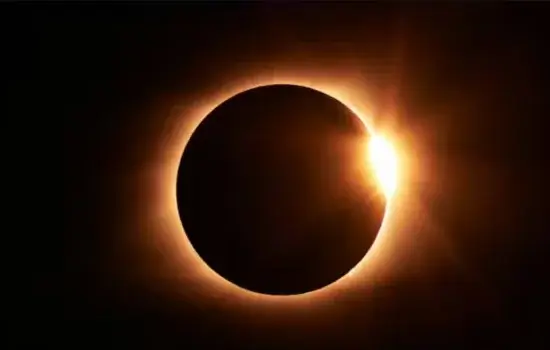The year 2025 is set to captivate sky enthusiasts with a series of remarkable celestial events, including two solar and two lunar eclipses. These phenomena offer unique opportunities for observation and appreciation of the dynamic interactions within our solar system.
Understanding Eclipses
Eclipses occur due to the alignment of the Earth, Moon, and Sun, leading to either a solar or lunar eclipse. A solar eclipse happens when the Moon passes between the Earth and the Sun, casting a shadow on Earth and partially or fully obscuring the Sun’s light. Conversely, a lunar eclipse transpires when the Earth positions itself between the Sun and the Moon, causing Earth’s shadow to fall upon the Moon, often giving it a reddish hue.
Eclipse Schedule for 2025
In 2025, the sequence of eclipses is as follows:
- Total Lunar Eclipse: March 13–14, 2025This total lunar eclipse will be observable across Europe, much of Asia, Australia, Africa, North America, South America, the Pacific, Atlantic, Arctic, and Antarctica. During this event, the Moon will traverse Earth’s shadow, resulting in a deep red or coppery appearance, commonly referred to as a “Blood Moon.”
- Partial Solar Eclipse: March 29, 2025This partial solar eclipse will be visible from Europe, northern Asia, northern and western Africa, much of North America, northern South America, the Atlantic, and the Arctic. During a partial solar eclipse, the Moon covers a portion of the Sun, creating a visible “bite” effect.
- Total Lunar Eclipse: September 7–8, 2025The second total lunar eclipse of the year will be visible from Europe, Asia, Australia, Africa, western North America, eastern South America, the Pacific, Atlantic, Indian Ocean, Arctic, and Antarctica. Similar to the March event, the Moon will exhibit a reddish tint during totality.
- Partial Solar Eclipse: September 21, 2025This partial solar eclipse will be observable from southern Australia, the Pacific, Atlantic, and Antarctica. Observers in these regions will witness the Moon partially obscuring the Sun.
Viewing Eclipses in India
For observers in India, the visibility of these eclipses varies:
- Total Lunar Eclipses (March 13–14 and September 7–8): Both total lunar eclipses will be visible in India, weather permitting. Lunar eclipses can be safely observed with the naked eye, and no special equipment is required.
- Partial Solar Eclipses (March 29 and September 21): The partial solar eclipses may not be visible from India, as their paths primarily cover other regions. It’s essential to consult local astronomical resources for precise visibility details. If visible, always use proper eye protection, such as eclipse glasses or solar filters, when observing solar eclipses to prevent eye damage.
Safety Precautions for Viewing Eclipses
While lunar eclipses are safe to view without any eye protection, observing solar eclipses requires caution:
- Use Proper Eye Protection: Never look directly at the Sun without appropriate eye protection. Use eclipse glasses that meet international safety standards or solar filters designed for telescopes and binoculars.
- Avoid Homemade Filters: Items like sunglasses, photographic negatives, or smoked glass do not provide adequate protection and should not be used to view a solar eclipse.
- Pinhole Projectors: Consider using a pinhole projector to indirectly view the eclipse. This simple device projects the Sun’s image onto a surface, allowing for safe observation.
Cultural and Scientific Significance
Eclipses have held cultural significance throughout history, often associated with myths and legends. In contemporary times, they provide valuable opportunities for scientific study, allowing researchers to examine aspects like the Sun’s corona during solar eclipses or Earth’s atmospheric conditions during lunar eclipses.
Conclusion
The year 2025 offers a series of celestial events that provide both awe-inspiring sights and opportunities for scientific observation. Whether you’re an avid astronomer or a casual sky watcher, these eclipses are not to be missed. Ensure to mark your calendars, verify local visibility, and prepare appropriate viewing equipment to fully experience these astronomical phenomena.

Hello, I’m Kapil Kumar, a seasoned SEO expert and blogger at WinnersList.in. My mission is to spotlight exceptional individuals and organizations across various domains. Through curated lists, profiles, and inspiring stories, I aim to celebrate outstanding achievements and inspire the next generation of champions. Join me in this journey.

